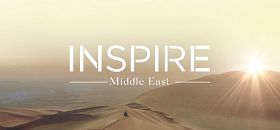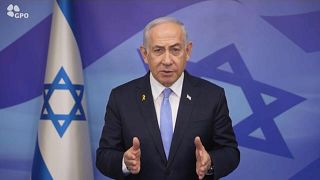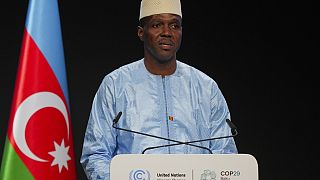Inspire middle east
Burj Al Arab’s engineering director explains how gold is used across more than 2,000 square meters of the hotel. We also look at how gold can be an investment, an accessory and even a bridal dowry.
Gold has long been used in a wide variety of industries – from dentistry and medical fields to digital technology and even in the coatings of space crafts.
However, the world’s only supposed ’7-star hotel’ presents the shiny metal in a much more dazzling and exuberant manner.
Guests at Burj Al Arab bask in a golden hue from the second they step through its doors – and duplex suites in the property can cost up to $19,000 a night.
It’s opulent interior prominently features 24-karat gold, imported from France and Spain, covering more than 2,000 square metres of surface space.
Mounir Lakkis, the hotel’s director of engineering explains that gold is present in every five square meters of the 56-storey building.
“It could be in the chair, it could be in the frame, could be in the ceiling, it’s everywhere”, he explains.
For Lakkis, a flourishing artist, gold is a precious metal that’s close to his heart:
“For me personally, the gold is, I can see my shadow in it, “ he says.
“It can take my soul with it. You know it’s warm, it’s like I feel strong when I work with the gold. Especially when it is just a thin paper or leaves something like that. You feel that you are playing with something very valuable.”
Gold as an interior design embellishment is evidently costly. Should a single one of the hotel’s dining room chairs becomes damaged, for example, then the entire set of seats will need regilding.
“The reason of that is the colour [of gold] looks different with oxidation,” says Lakkis.
The ballroom regularly hosts lavish events and guests who hire it are often keen to match their menus to their luxurious surroundings.
Lakkis recalls that a guest once requested the six tiers of their wedding cake be covered in gold.
On a daily basis, the establishment also serves gold dust cappuccinos, 24-carat gold-topped cakes and drinks infused with liquid gold, gold pearlescence and golden sugar cubes.
The golden consumables are a definite hit with guests, according to Sudheera Fernando. The senior mixologist at Burj Al Arab says that the vast majority of the 200 cocktails he makes in a single day include a gold element.
Going for gold: to buy or not to buy?
Whilst some people might prefer to sprinkle gold on their coffee, others would rather use the metal to bolster their savings. And in times of financial uncertainty, ploughing money into the commodity is best practice amongst shrewd investors.
According to respected gold consultant Jeff Rhodes, gold remains the best “safe haven” around. He explains that the commodity has been the standard measure of value for more than 5,000 years.
Rhodes states that the metal’s value has increased 400 percent since the early 2000’s and he predicts that prices will head north of $1,500 this year.
The specialist suggests that if people set aside just 10 percent of their monthly earnings to buy gold, then they’ll reap the rewards in a matter of decades.
“Gold is not an investment, it’s a savings product – always remember that.” says Rhodes, “And when you get paid at the end of each month, put some of that into gold – a small amount and you’ll be happy. In twenty or thirty years’ time, trust me, that gold will be worth a lot more than it is today.”
Middle Eastern gold jewellery trends
Gold financial products aside, the acquiring of gold jewellery is particularly strong in the cultures of the Middle East.
And whilst Indian nationals are the largest consumers of gold worldwide, Dubai stands out as the largest international importer of finished gold jewellery.
In the year ahead, gold jewellery designs will continue to keep pace with trends that have emerged in New York and London, according to the Chairman of Dubai Gold and Jewellery Group, Tawhid Abdullah.
Despite white gold’s popularity in recent years, the veteran gold trader believes that the pure yellow metal has come full circle to resume its place as the number one choice for shoppers.
“The yellow gold is back to be the big hero of the situation and I personally believe that over thousands of years it’s always been the best and it’s back to look so.” he says, “Yellow gold, sunshine, coloured stones and mother of pearl in different colours – they are back strong.”
For centuries, it has been customary to buy gold for wedding celebrations in the Middle East and North Africa. Gifts of the precious metal can weigh as much as three kilograms, according to a Reuters report.
This tradition is still going strong, with Arab millennials requesting bridal jewellery sets in yellow, rose and white gold tones – and with plenty of embellishments.
Emirati designer Fatema Al Daheri created the brand Ruwaya Jewellery three years ago and she caters to the UAE’s affluent wedding segment. General Manager, Jamil Dimachkie, explains that their gold-loving clients are mostly globe-trotting professionals whose tastes are inevitably influenced by their travels and the latest trends on social media.
Social eyes: Inspired talent trending online
A post shared by Maison Majorelle Tanguif (@maisonmajorelletanguif) on Mar 19, 2018 at 2:57am PDT
A post shared by Maison S, Créateur De Saveurs (@maison.s) on Feb 8, 2018 at 11:48am PST












01:19
International flights cancelled due to Indonesia's volcanic ash
11:07
Benin: Tapping the potential of luxury tourism [Business Africa]
02:00
Grand Prix d'Horlogerie de Genève: the 90 competing timepieces on display
11:07
Egypt's Economy Hard Hit by Gaza War [Business Africa]
01:00
No Comment: Kenya moves its elephants
05:00
Discover Kabylia: Algeria's emblematic mountain destination